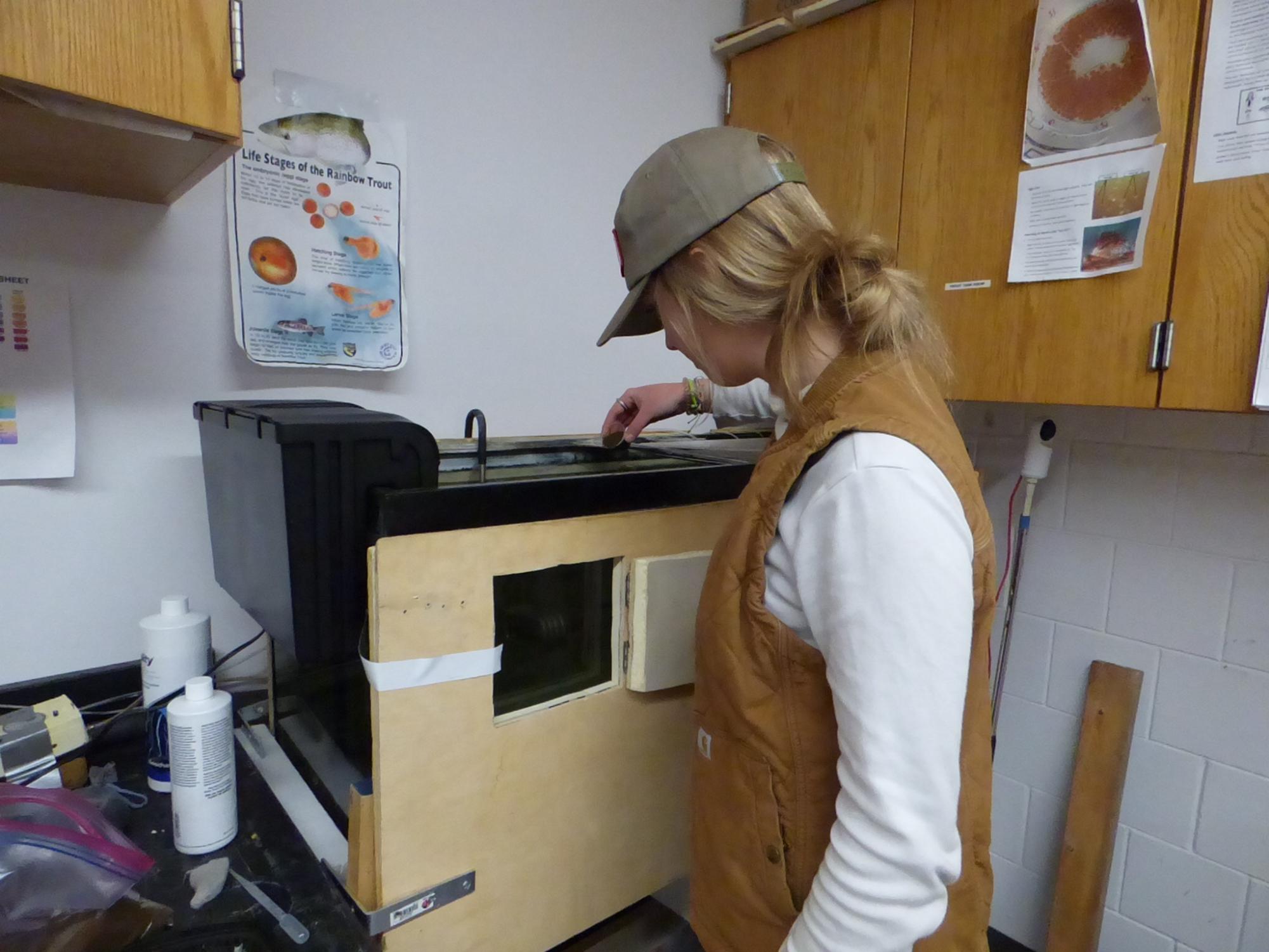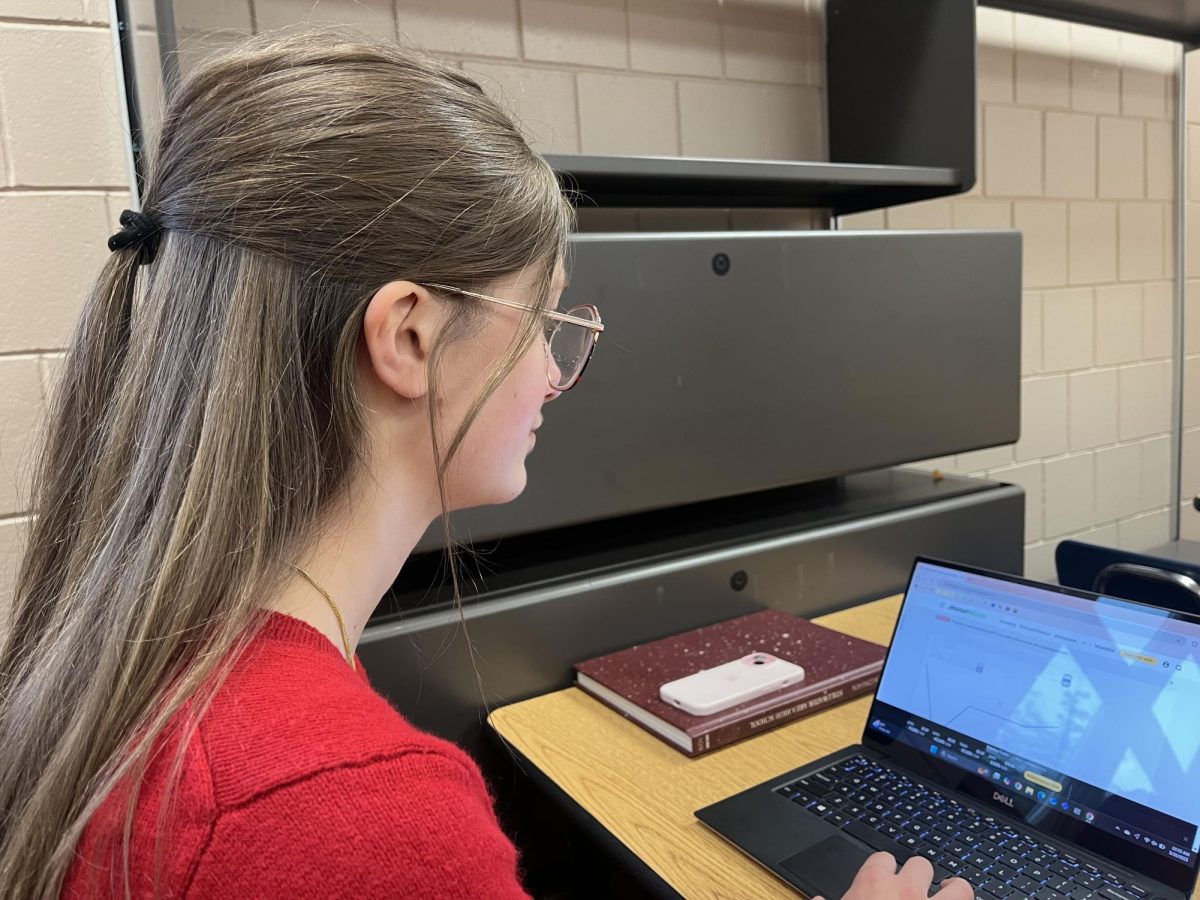Every year, the Environmental Science and Fish and Wildlife classes take on the task of raising rainbow trout. Students learn the different aspects of taking care of freshwater creatures and float into the world of fish. But this time around, two brand new teachers are guiding the crew of teenagers ready to jump into the project.
New Agriculture Science teacher Kathrine Crowley is leading her fish and wildlife students in taking care of three tanks of trout. She grew up on a crop and dairy farm and continued to get an agriculture degree so raising fish is a new but exciting endeavor for her. Crowley lets her students lead the way and be as independent as possible with the process so they can truly get a feel for how rewarding hands-on science can be.
Crowley explained she is “learning right along with the students” and getting to problem solve with them.
AP Environmental Science teacher Peter Stenross has taken the place of Andy Weaver, who first initiated the school trout project early in his career. Stenross has always had a passion for fish and other aquatic animals. From having a fish tank at ten years old to getting a degree in aquaculture, he has an extensive background in raising and caring for aquatic species. Stenross has been enthusiastic about teaching his class how to best care for the fish and is an inspiring role model for students specifically looking to go into the environmental and marine life job fields.
“I’m majoring in environmental engineering, so it definitely gets me excited to have that be a little part of my life in the next few years and go through processes similar to this…I think it is really special to do it while still in high school,” senior Eve Pagan said.
The hands-on project is designed for students to learn firsthand the different aspects of raising fish and the multitude of delicate steps it includes. Trout require living temperatures of approximately 50 degrees Fahrenheit and high levels of oxygen. Keeping all variables from temp to chemicals in check can be much harder to do outside of a fish’s natural environment, which is why it is vital for students to be precise when caring for them.
“I have learned that it is a delicate process for sure. You have to learn to expect that there will be errors that will cause you to lose some eggs or have deformities…which is sad but interesting,” Pagan said.
The Fish and Wildlife and AP Environmental Science students split into groups within their classes and each group rotates turns with taking care of the tank of fish. This includes feeding them, taking samples of the tank water, and checking to make sure none of the fish have passed away. Along with the students checking up on the tanks daily, Stenross and Crowley go in to clean the tank and verify the health of the fish as well. When taking water samples, the students are required to check PH, nitrate and ammonium levels due to the risk of a mass die-off if any of those are increased or decreased significantly.
Pagan explained that seeing and being so involved in the process from start to finish makes it feel like they are bettering the world even if it is on a small scale.
Stenross and Crowley put an emphasis on making sure the students are doing the majority of the work in raising and releasing the fish. The students do most if not all the work in keeping the fish healthy during the week, and teachers only step in during breaks and on weekends. Although it can put more direct pressure on the students if something were to go wrong with the project, it also teaches them how their actions have an important impact and gives increased respect for a completely different species and living environment.
“My role is mostly a facilitator…Monday through Friday, it is really on the students. So anytime there is a water quality that might seem a little bit high or low I’ll run tests again after school to double-check the student’s work,” Stenross explained. “Our main job is to make sure that the fish are staying alive while teaching our students how to raise them.”
Having the unique opportunity for high school students to participate in a project from start to finish like raising trout will directly benefit their minds, souls and the outdoor environment. Stenross and Crowley jumped head first into their new positions, quite literally leading a school of promising fish, as well as students who are ready to make change through hands-on science. So even though the fish’s future might include swimming downstream, the student’s futures are looking up.









